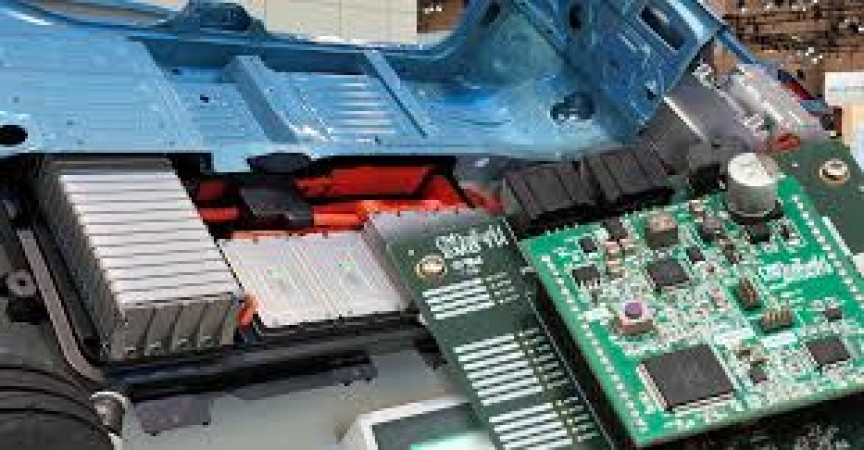
In the rapidly advancing world of electric vehicles, the Battery Management System (BMS) emerges as a crucial player, likened to the 'brain' orchestrating the harmonious functioning of the battery. The BMS plays a pivotal role in managing and optimizing the performance of the battery pack, ensuring its longevity, and providing a user-friendly interface for electric vehicle enthusiasts.
One of the primary responsibilities of the BMS is to ensure an equitable distribution of energy among the individual cells within the battery pack. Each battery cell is unique, with its own characteristics, and variations can arise due to manufacturing differences or wear over time. The BMS actively monitors and adjusts the charging and discharging of each cell to maintain a balanced state, preventing overcharging of certain cells and ensuring all cells contribute equally to the overall performance.
The BMS serves as a guardian, preventing overcharging or discharging of the battery cells. Over time, these extremes can lead to irreversible damage, significantly impacting the lifespan of the battery. By carefully managing the charging and discharging processes, the BMS contributes to the longevity of the battery, a crucial factor in the sustainable use of electric vehicles.
BMS takes charge of monitoring and regulating the temperature of the battery cells. Lithium-ion batteries, commonly used in electric vehicles, are sensitive to temperature variations. Overheating can lead to thermal runaway, a potentially hazardous condition where the battery temperature increases uncontrollably. The BMS intervenes by adjusting charging rates and implementing cooling mechanisms to maintain an optimal temperature range, ensuring the safety and efficiency of the battery.
Maintaining an optimum temperature range is not only about safety but also about performance. The BMS ensures that the battery operates within the ideal temperature limits, maximizing its efficiency and overall performance. This, in turn, aligns with the aspirations for peak electric vehicle performance, providing a smooth and powerful driving experience for users.
BMS is the ever-watchful guardian of the battery, continuously monitoring the state of each battery cell in real-time. This constant vigilance allows the BMS to respond dynamically to fluctuations in demand and usage patterns. Whether the vehicle is accelerating, decelerating, or stationary, the BMS adjusts the flow of energy to meet the immediate needs of the electric vehicle, optimizing energy utilization.
The BMS is not merely reactive but also proactive. Through the utilization of sophisticated algorithms, it predicts potential issues before they manifest. This predictive analysis enables a proactive approach to maintenance and troubleshooting, minimizing downtime and ensuring the reliability of the electric vehicle. Users can enjoy a seamless driving experience, confident in the reliability of their vehicle's power source.
BMS acts as a communication hub within the electric vehicle, facilitating seamless interactions between the battery and other vehicle systems. It ensures that the battery integrates seamlessly with the propulsion system, charging system, and other crucial components. This intra-system dialogue enhances the overall efficiency and performance of the electric vehicle, creating a cohesive and well-coordinated automotive ecosystem.
For the end-user, the BMS plays a crucial role in providing a user-friendly interface. It relays critical information about the battery status, charging levels, and overall health. This transparency empowers users to make informed decisions about their driving habits, charging practices, and overall maintenance of the electric vehicle. The BMS acts as a bridge between the complex internal workings of the battery and the user's understanding, fostering a positive and interactive experience.
While BMS excels in balancing the energy distribution among cells, challenges persist. Innovations in BMS technologies aim to overcome these perplexities by achieving greater precision and efficiency in cell balancing. Advanced algorithms and monitoring systems are being implemented to address cell imbalances more effectively, ensuring optimal performance and longevity.
Range anxiety has been a persistent concern for electric vehicle users. Innovations in BMS are pivotal for extending the range of electric vehicles. By optimizing energy consumption, minimizing losses, and enhancing overall battery efficiency, BMS contributes significantly to alleviating range limitations. This breakthrough is crucial for the widespread acceptance and adoption of electric vehicles.
The future of BMS holds promises of enhanced artificial intelligence integration. BMS systems of tomorrow will not only monitor and adjust but also learn and adapt to user preferences and driving patterns. This evolution towards smarter and more adaptable electric vehicle systems aligns with the overarching goal of making electric vehicles more intuitive and user-friendly.
As the electric vehicle landscape evolves, BMS innovations will play a crucial role in developing sustainable and eco-friendly transportation alternatives. Efforts are being directed towards enhancing energy efficiency, utilizing recycled materials, and creating batteries with reduced environmental impact. BMS will continue to be at the forefront of these sustainability initiatives, contributing to the overall environmental friendliness of electric vehicles. In conclusion, the Battery Management System in electric cars stands as the linchpin for optimal performance, longevity, and user-friendly interaction. It is the guardian that ensures each cell contributes its best, the communicator that bridges the gap between complex technology and user understanding, and the innovator that propels electric vehicles into a future of greater efficiency and sustainability. As technology advances, the evolution of BMS will be instrumental in driving the electric vehicle industry into a new era of smarter, more reliable, and environmentally conscious transportation.
Sportier version of Maruti Swift is coming soon, know what will be the specialty
MG Motor India: MG Motor will launch 7 cars in India by 2025, SAIC makes big investment in India
PLI scheme extended for automobile and auto component industry, government approved